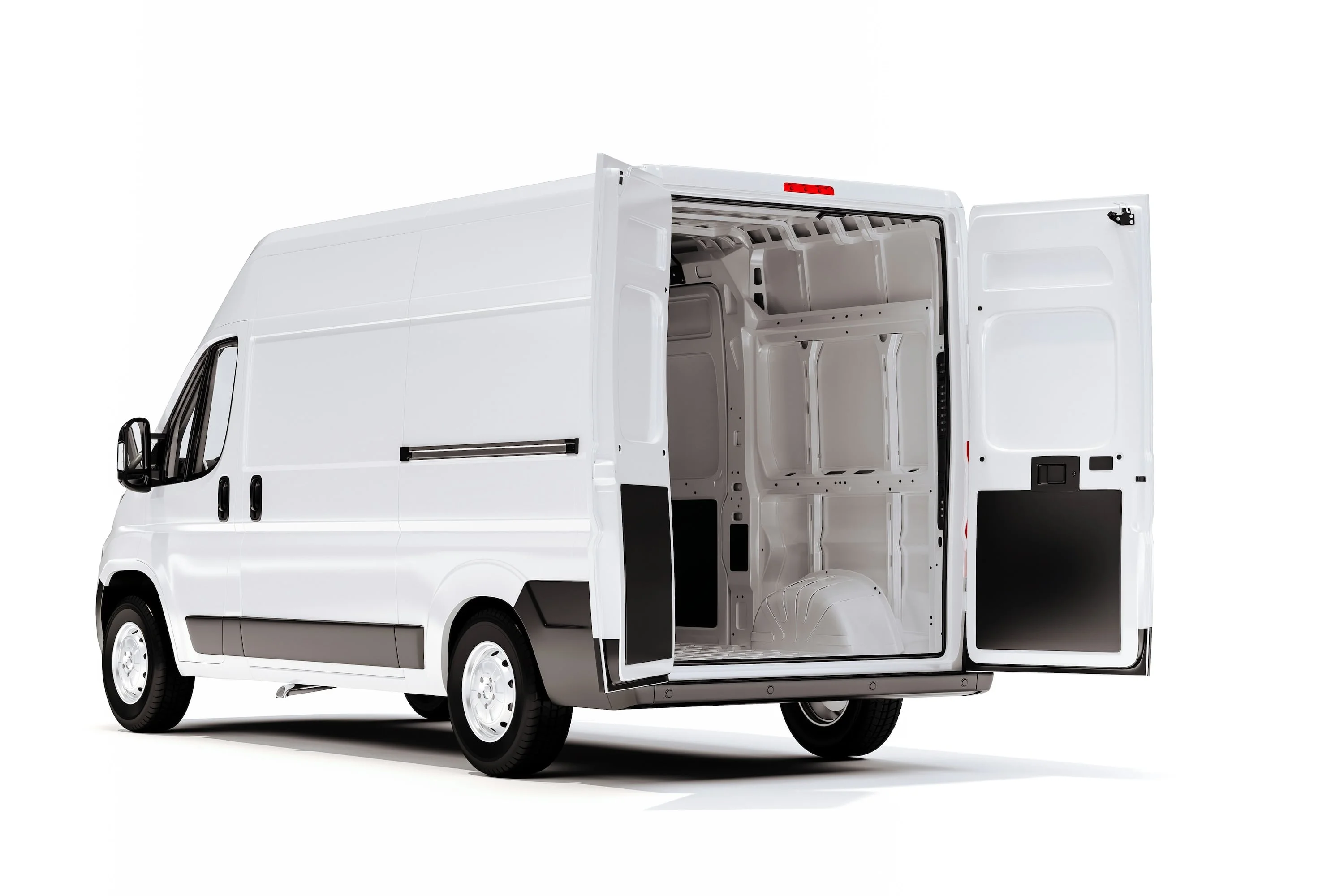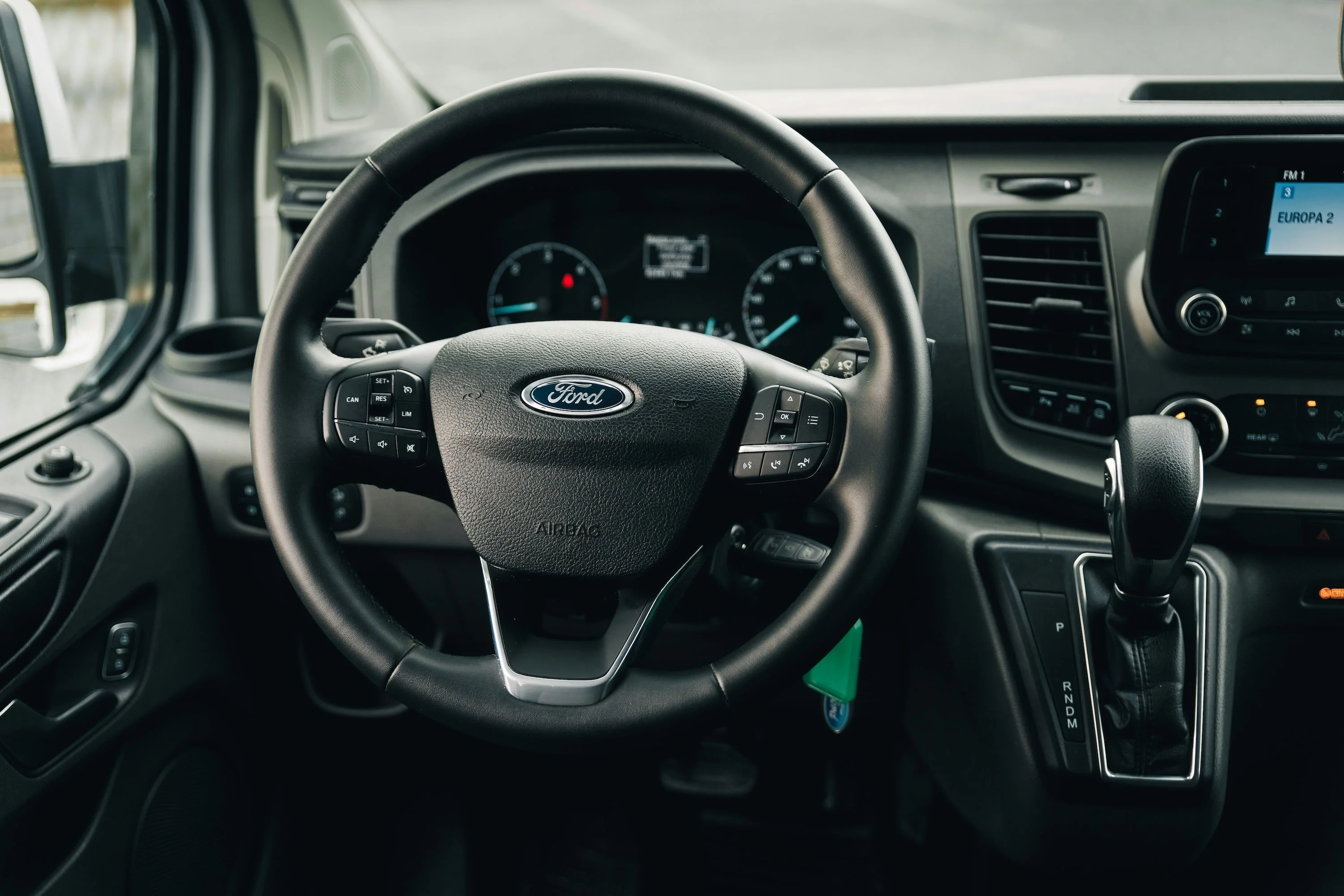
With so many vans on the market, it can be daunting to know which one to choose for your business.
Getting the right size van for your needs plays a big part in this decision. After all, an estimated 54% of vans are used to carry equipment, tools, and materials. You need to make sure there’s enough room for everything, without going for something that’s unnecessarily big.
This is where doing research ahead of time really comes in. For instance, how much space do you need inside to suit your needs? What size van would be most comfortable for you to drive? How much can you comfortably afford a month on fuel?
To help, we’ve put together a guide to all things van size, including terminology and FAQs - as well as comparisons of popular light-commercial vans. We’ve written this for everyone, whether new or experienced with vans, to keep their van know-how up-to-date.
No matter how experienced you are with vans, the truth of the matter is that getting one can still feel like a pretty complicated experience. DriveSimple was created to make it easier. Our van subscriptions offer a flexible alternative to traditional van leasing, where you set the terms.
Van terminology glossary
Just in case you need a refresher on what some van-specific terms mean, before we get into the comparison section.
Load space
The load space is the area of a van purposefully designed to carry cargo, rather than passengers. Think of it as a van’s storage space.
Loadspace dimensions (sometimes written as one word) can be determined by measuring the internal width, length, height, and/or volume of a van. The bulkhead (where the cabin and engine are) is usually not included in this measurement.
Understanding the load space of a van is useful, as it helps you determine how much room is available to carry whatever you need. For instance, if you need a van to carry large or bulky items, you might go for a van with more load space.
Payload
The payload capacity is the overall total weight that a van can legally and safely carry, in addition to its own weight. It’s the van itself - plus everything inside.
The payload is calculated by subtracting the unladen weight of the van, including its fuel tank (known as the kerb weight), from its gross vehicle weight (GVW). The GVW includes any passengers (plus the driver), cargo, fuel, external racking, and any equipment and tools.
It’s really important to know what both your payload and GVW are, as overloading your van beyond its GVW risks financial penalties.
Wheelbase
The wheelbase is the distance from the centre of the van’s front wheels to the centre of its rear wheels. These are also known as its axles.
Wheelbase measurements show the distance between the wheels. They serve as an indicator of the van's overall length, as well as its cargo space.
Vans are categorised by four wheelbase types. These are:
- Short wheelbase (SWB). Typically measure 2.4 to 3 metres.
- Medium wheelbase (MWB). Typically measure 3 to 3.5 metres.
- Long wheelbase (LWB). Typically measure 3.4 to 4.5 metres.
- Extra-long wheelbase (ELWB). Typically measure 4 metres and up.
Please note that some of these categories overlap in their measurements.
The wheelbase affects how easy it is to manoeuvre the van. A smaller wheelbase typically has a smaller turning circle, making it easier and more responsive to move around tight areas. If you want a van that’s relatively easier to drive, opting for one with a small wheelbase is a good decision.
Length of wheelbase
You might see codes beginning with ‘L’ in a van description. These categories are another way to indicate the length of a van’s wheelbase. These are:
- L1. Short length.
- L2 . Medium length. For example, a Renault Trafic.
- L3. Long length. For example, a Citroën Relay Long Wheelbase.
- L4. Extra-long/maximum length. For example, a Citroën Relay XL Wheelbase.
Please note that there are no standard measurements for each of these categories. So, do check the van description for more details.
Height of roof
You might see codes beginning with ‘H’ in a van description. These indicate height of roof categories, or the internal loading height of a van. This is another way to assess a van’s loadspace capacity, but only in terms of height.
The ‘H’ categories are:
- H1. Standard/low height. Typically measure 1.3 to 1.45 metres.
- H2. High height. Typically measure 1.8 to 1.95 metres.
- H3. Super/extra-high height. Typically measure 2.1 metres to 2.25 metres.
There are no exact measurements for these categories. These are to be used as guidance. We strongly recommend checking the exact measurements of the vans you're interested in.
What are the different sizes of vans?
As you might expect from what we’ve covered in the glossary, there are many different sizes of vans out there. The simplest way to break them down is into these six categories:
- Small vans
- Medium vans
- Large vans
- Luton Box vans
- Pickup vans
- Dropside vans
Van specification comparison
Now that we’ve gone through the terminology, we’re going to be using when comparing different van sizes, please find a table with popular vans and their dimensions below:
FAQs
How wide is a van in the UK?
As we’ve explored in this article, the sizes of vans in the UK vary quite a bit; this includes width measurements too.
Typically, vans in the UK measure anywhere between 2,000 mm and 2,500 mm. These measurements are based on the external width, including mirrors.
How long is a regular van?
Van sizes don’t have set lengths, and it’s challenging to determine the exact length of a ‘regular’ van. Even harder is determining what a ‘regular van’ is, as there are so many variations to choose from!
As a general rule, small vans typically measure around 4.5 metres, mid-sized vans around 5 metres, and large vans up to 6.5 metres.
DriveSimple’s van pages all come with detailed descriptions, including all the specifications covered above. So, you know exactly what you're getting from your chosen van.
Our flexible van subscriptions allow you to set your own terms - from duration, to deposit, and even cancellation policy. Get started by choosing a van here.
Got any questions? Read our FAQs or reach out to one of our expert team members, who’ll be more than happy to help.


